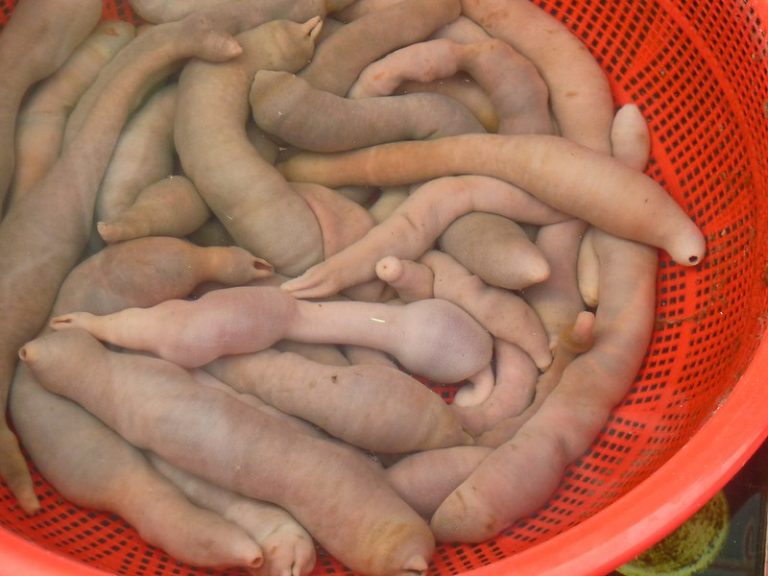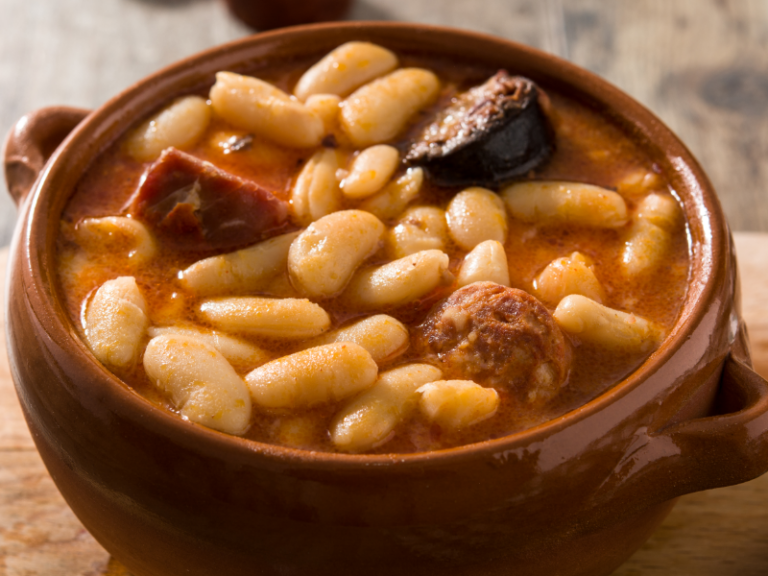Swiss Food: 9 Traditional Dishes of Switzerland
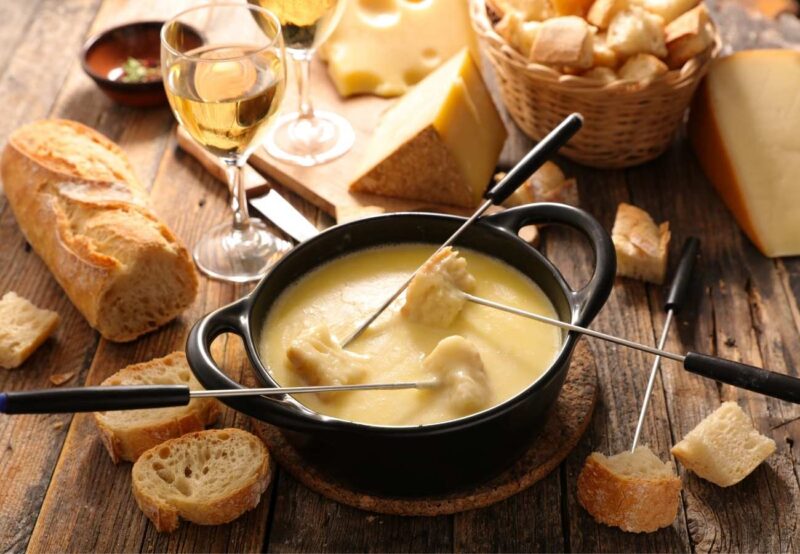
Switzerland is one of the smallest countries in Europe. It is landlocked by the countries of France, Germany, Austria, Liechtenstein and Italy, and is one of only two countries in the world with a square shaped flag. Approximately 8.5 million people live in Switzerland with about a quarter of the population being immigrants from surrounding countries.
It is often described as one of the best places to live for its great education and healthcare systems, high standards of living and stable economy. Though German is the most spoken language, it is not standard German but rather a mix of dialect better described as Swiss German.
Switzerland is known for its beautiful mountains and countryside landscapes, good cheese, delicious chocolate and luxury shopping but it also has a rich food culture.
Traditional Swiss food is often plain and made with simple ingredients due to the country’s farming background. Today, like many countries, Swiss food varies by region and is influenced by its neighboring countries.
In the regions near Italy polenta and pasta dishes are popular. French influences are cheese related with both countries already having a strong cheese culture. The largest influence in Swiss cuisine is German food.
Most dishes in Switzerland consist of one of or a combination of meat, potatoes, cheese, vegetables and bread.
Älplermagronen
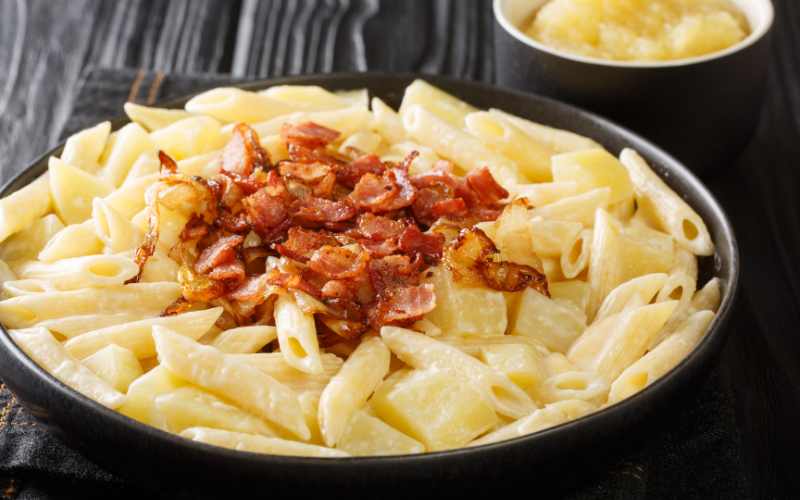
Älplermagronen is a pasta and cheese dish. Often described as being similar to macaroni and cheese, this dish is so much more. In addition to the pasta and creamy gruyere cheese, other ingredients in Älplermagronen are caramelized onions and potatoes. Alpler means Alpine and the dish originates from the Alpine region. It is also known as Alpler Makaroni or Alpler Magrone. Magronen means macaroni.
Some variations of Älplermagronen include meat like bacon or ham. It is usually served with Apfelmus, a warm applesauce.
Berner Rösti

Berner Rösti is a dish made from pan fried potatoes with bacon. Regular Rösti does not include bacon. Berner refers to the dish’s place of origin, which is Bern, the capital of Switzerland.
To make Berner Rösti, grated potatoes and bacon are fried in butter with onions. The potatoes are pressed into a flat pan cake shape. Modern versions of Rösti are made from grated raw potatoes but traditionally Rösti is made with already cooked potatoes.
Berner Rösti is also commonly served “mit Spiegelei and Speck”. Spiegelei is Swiss German for fried egg, whereas speck is smoked pork belly. This dish is simply Berner Rösti served with fried eggs and bacon.
Berner Platte
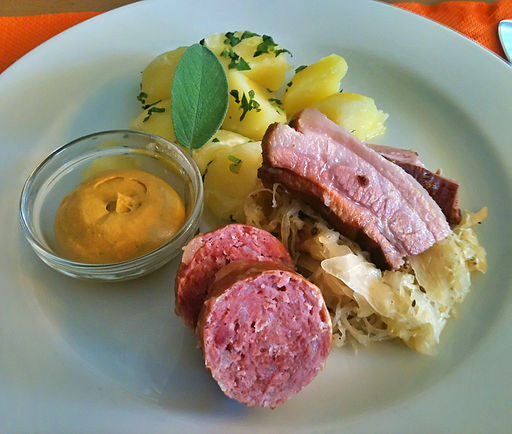
Also from Bern is the Berner Platte, a dish consisting of an assortment of meats like bacon, sausages, pork chops, smoked beef, with beans, potatoes and sauerkraut. All the components are cooked separately then served on one plate. It was first served to celebrate the Bern’s defeat of the French in battle.
Zürcher Geschnetzeltes

Zürcher Geschnetzeltes is veal cooked in a creamy white wine sauce. Sometimes mushrooms are added to the dish. Zürcher Geschnetzeltes originates from the city of Zurich.
Geschnetzeltes mean sliced meat. The veal for this dish is cut into strips before cooking. It is often seasoned with lemon juice and parsley and served with Rösti or noodles.
Suure Mocke
Surre Mocke is a wine braised beef dish. First a marinade of wine and spices like bay leaves is cooked. The beef is placed in the marinade and refrigerated where it is constantly rotated in the wine marinade for 4 to 5 days. The beef is then cooked slowly for about 3 hours.
The long marination time and slow cooking causes the meat to almost melt in the mouth. It is served with mashed potatoes.
Cordon Bleu
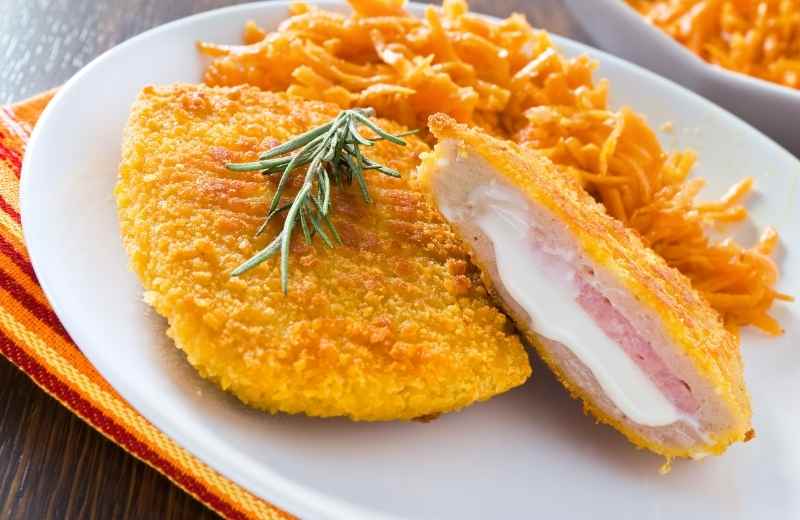
Cordon Bleu is a dish consisting of meat filled with ham and cheese. Chicken is the popular choice for this dish but other meats like veal are used too. The meat is cut or pounded thin, Swiss cheese and ham are rolled into the piece of meat. It is then breaded and fried or baked.
The name is clearly French but Cordon Bleu comes from the Switzerland. Cordon means ribbon and bleu means blue. Blue ribbon describes a dish or cook of high standards.
Fondue
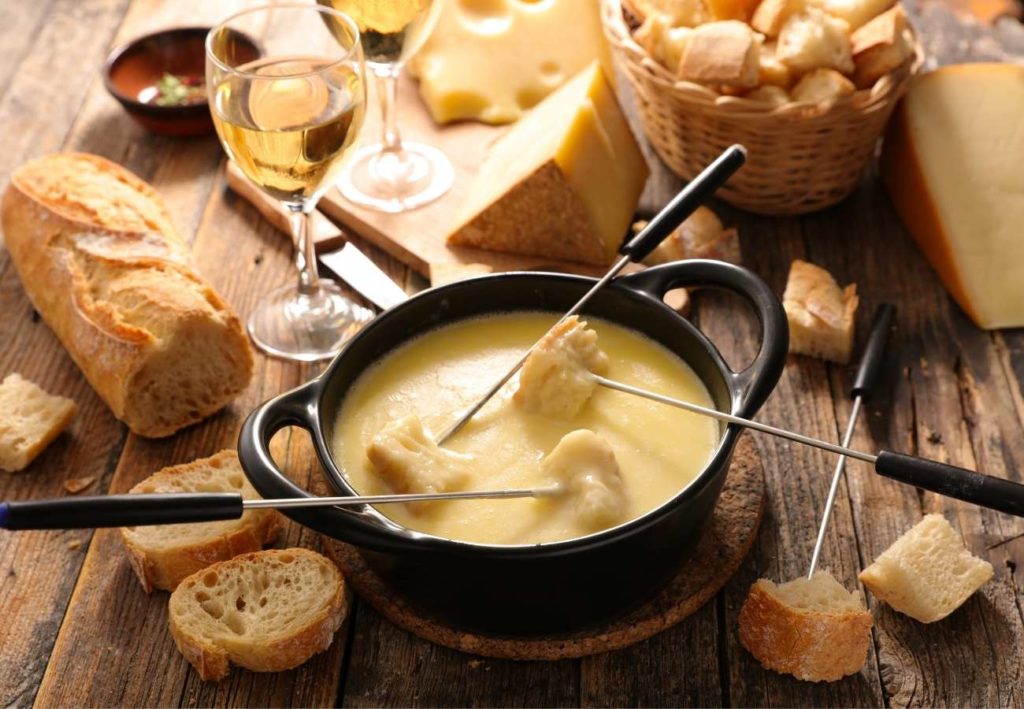
Fondue is a melted cheese dip. In North America, it is probably one of the better-known European dishes. Fondue originates in Switzerland and is at least 200 years old. Created out of necessity, melted cheese was used as a way to make stale bread easier to eat.
There is no single recipe for fondue. Traditionally it is made with hard Swiss cheeses, mostly Gruyere, white wine and spices like clove and nutmeg. In Switzerland, Fondue it is eaten during the cold months and only with bread.
Raclette
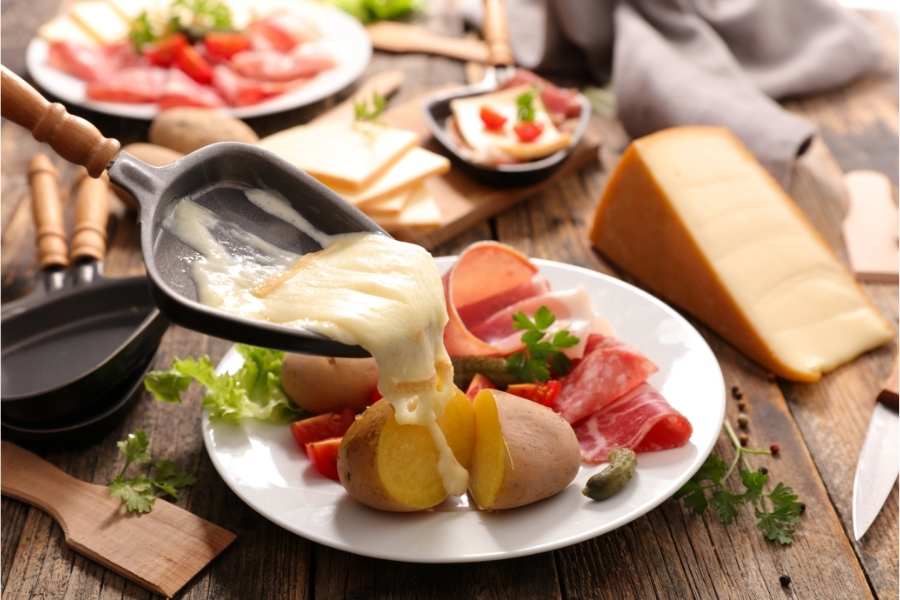
Raclette is a cheese dish made by heating up a large chunk of cheese. The melted portion of the cheese is then scraped off the chunk and served over potatoes, onions and gherkins.
While the dish is of Swiss origins the name Raclette comes from the French language and means to scrape. While different cheeses can be used to make Raclette, there is a specific cheese called Raclette made from cow’s milk which is best suited for this dish. Raclette cheese comes in different flavors like truffle and peppercorn.
Bündnerfleisch

Bündnerfleisch is air dried meat. The meat is cured with salt, herbs and spices. After curing for weeks, the drying phase lasts several months. The process removes moisture from the meat and tenderizes it.
While dried meats are not unique to Switzerland, the term Bündnerfleisch is used only for meat air dried at high altitudes in the region of Grison where it originated. It is served in thin slices of bread and soups or eaten with raclette.
Bündner Nusstorte

Bündner Nusstorte is a walnut filled pastry. It’s often called a cake but it isn’t the traditional kind baked from a batter. A short crust pastry is filled with a caramelized walnut and cream mixture, covered with more pastry, then the edges are sealed shut and baked.
Bunder refers to the region where the pastry originates, Graubunden. Nuss means nut and a torte is a type of cake popular in Europe.

